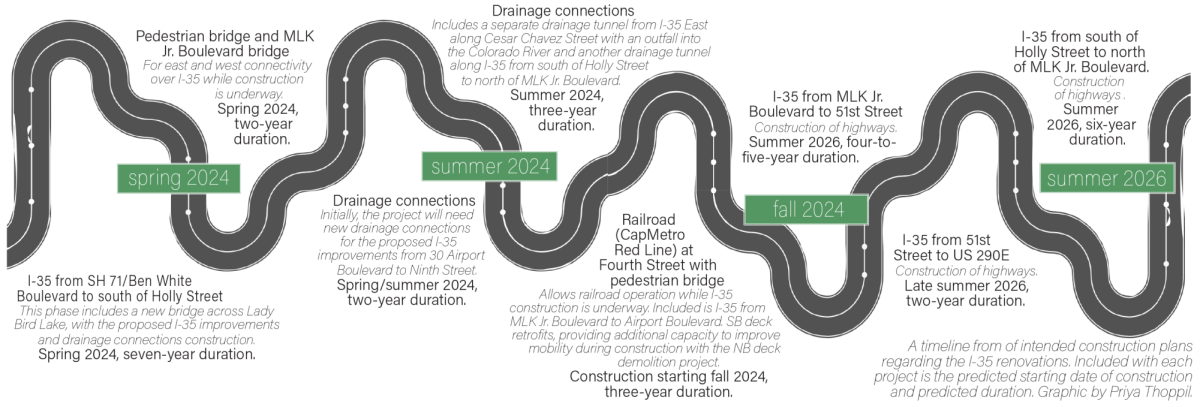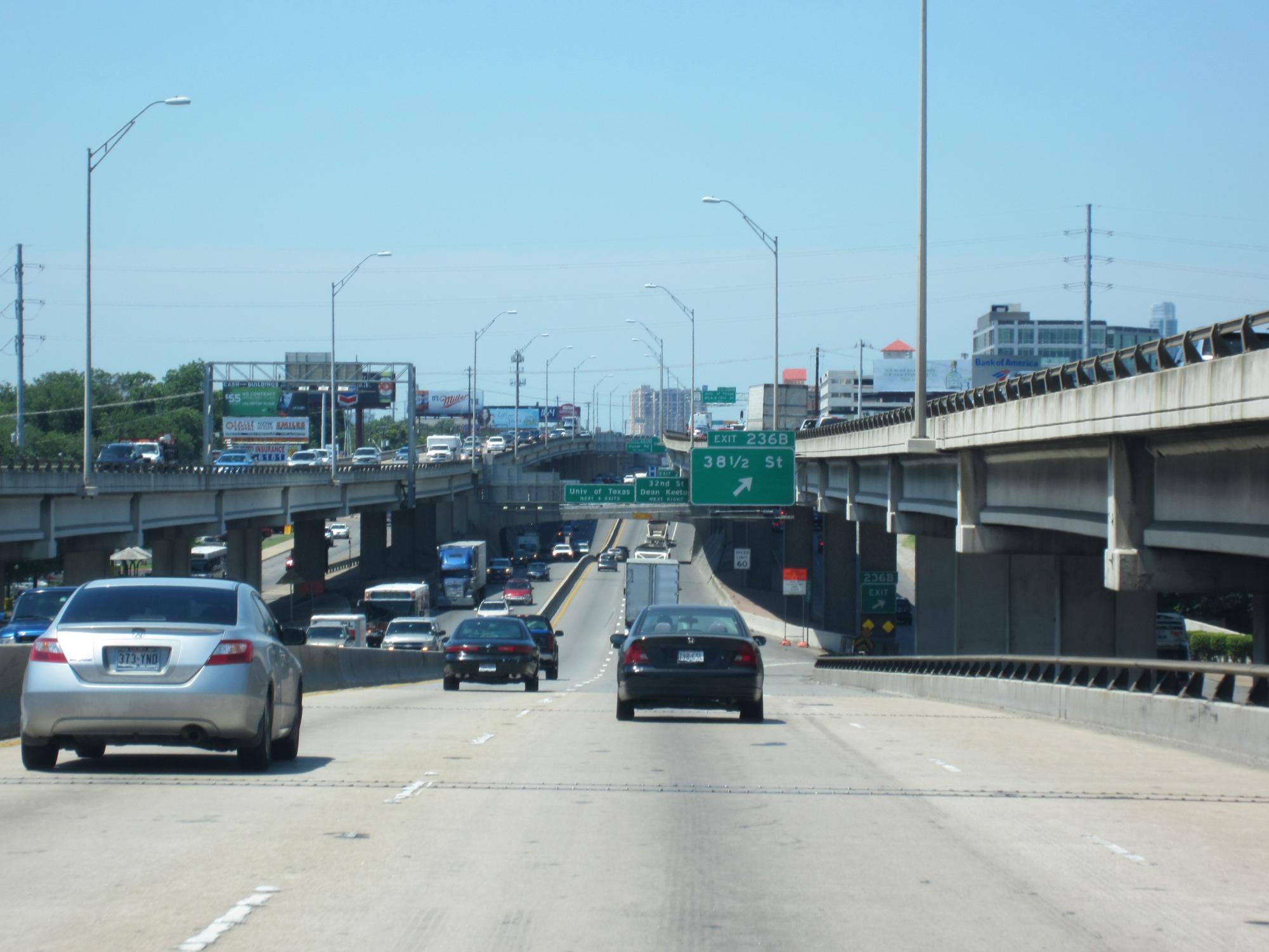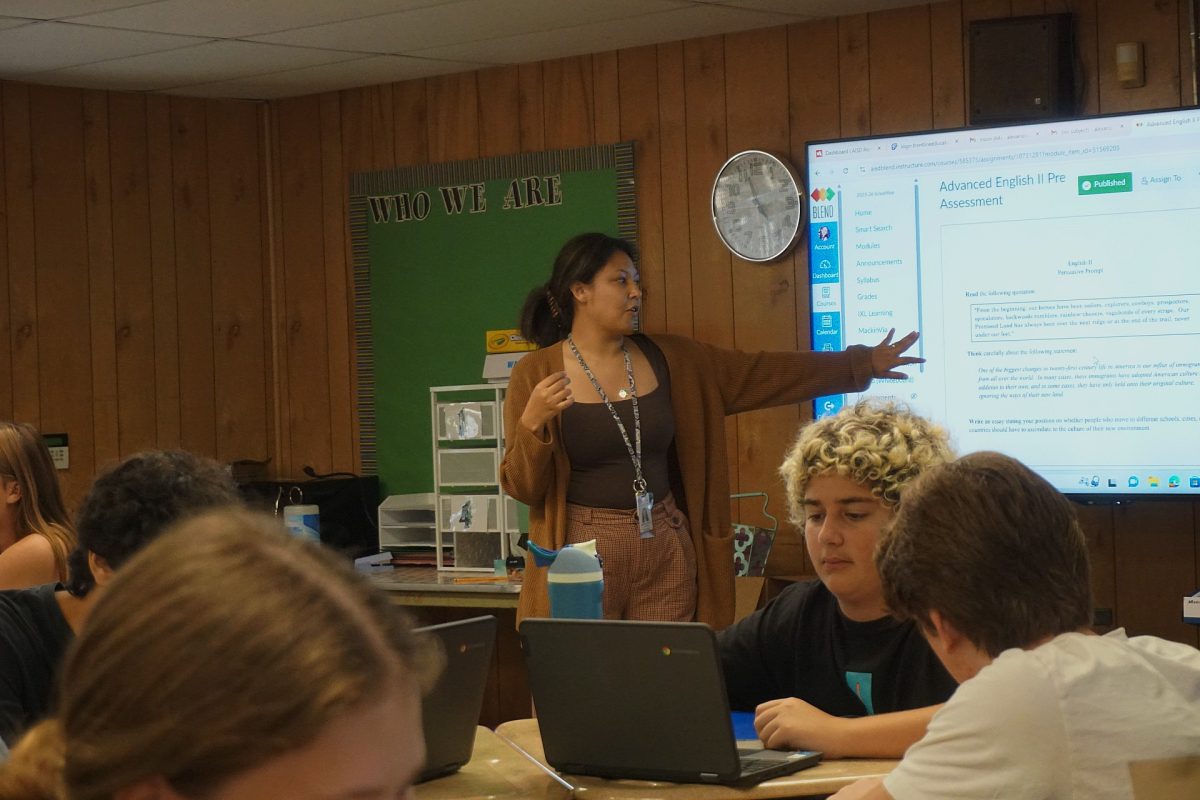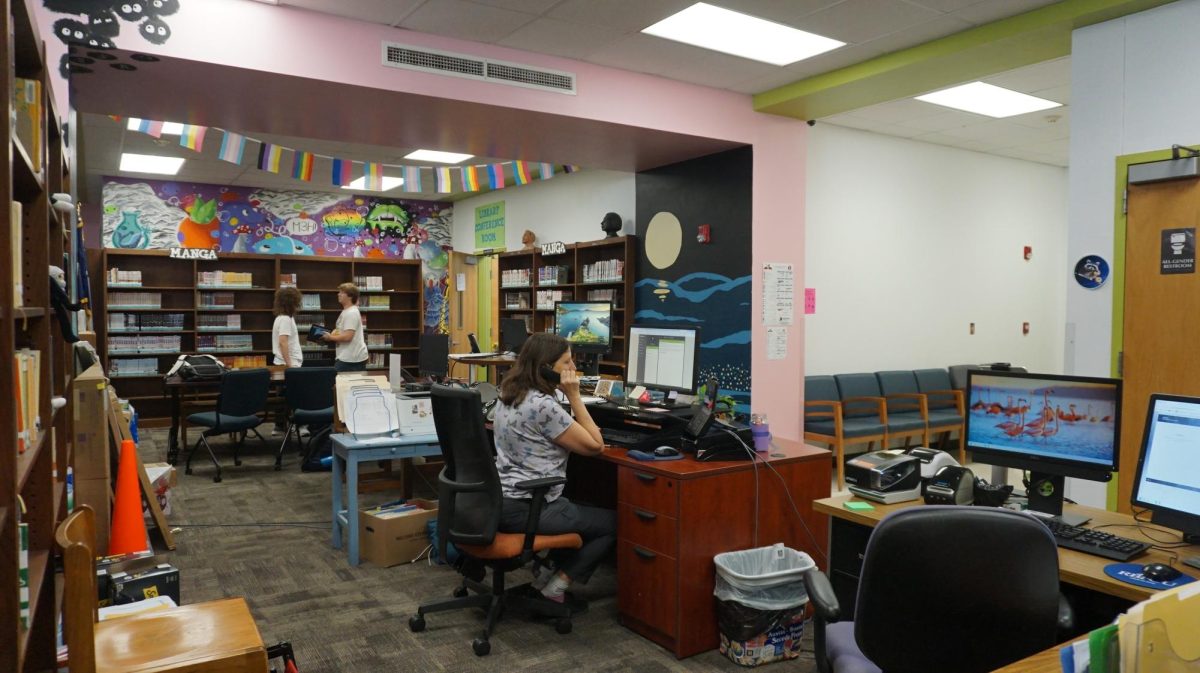While the plan to expand I-35 has been long coming, recent changes to the plan to expand the highway to 20 lanes wide, have led to more community interest, opinions and advocates for change.
Notices have begun to arrive at the front steps of many businesses and homeowners along I-35, telling them they will have to vacate due to the expansion. Around 111 households and businesses will have to relocate, according to the state’s count.
Oliver Harrington, a McCallum graduate and current freshman at UT, first heard about the plan for expansion in 2020, when the city was preparing to vote on Prop A, which funded the Project Connect transit expansion plan. He said he was frustrated that the Texas Department of Transportation wasn’t required to put its I-35 expansion plan up for a vote.
“I have a feeling that the I-35 plan wouldn’t have passed had it been put up for a vote,” Harrington said.
Harrington feels that the added lanes will not help traffic and instead increase demand for driving.
“Induced demand states that adding more lanes to a roadway invites more people to drive, and the new lanes are just filled up with the same traffic that plagued the roadway before the expansion, but now worse,” Harrington said. “This has been observed in cities across the country, such as LA and Houston, and the same thing will happen in Austin.”
Wilshire Woods resident Elissa Steglich lives directly next to I-35, with only a railroad track separating her house and the highway. While she is very close to the highway, she will not have to relocate. But she does know of businesses that will, such as Spanish immersion preschool Escuelita Del Alma.
Due to her proximity to I-35, Steglich has noticed a lot of background noise at all times of day. But, as she has lived in her current house for over eight years, she said she has learned to tune it out.
“You can hear it more in the winter when all the trees have lost their leaves, so there is less to obstruct the noise,” Steglich said. “The expansion and the sheer number of vehicles will create more noise.”

Similarly close in proximity to the highway, but differently affected, freshman Devlinn Fitzpatrick has lived next to I-35 his whole life. He hasn’t had many noise issues, just the blaring of horns every once in a while.
“A negative effect of this is all of the local businesses being taken down along the highway, some of which I go to, which is sad,” Fitzpatrick said. “Although not a whole lot, I do think it will help with traffic a little.”
Many groups and rallies have been organized to protest against this highway expansion, one of them being the grassroots movement Rethink35. Passionate about living in a clean, vibrant city, Adam Greenfield, board president and founder of Rethink35, has been working for this movement since the fall of 2020.
Greenfield noticed the severity of climate change when living in San Francisco, experiencing the fires firsthand.
“It kind of hit me that climate change is very very serious,” Greenfield said. “And I started to get very serious about addressing climate change.”
With these ideas in mind, Greenfield formed Rethink35 in hopes of getting the City of Austin to recognize the impact this highway expansion will have on the city and the environment.
“Our main mission is to stop the proposed expansion of I-35 and push for a sustainable alternative,” Greenfield said. “And we want to push for alternative options.”
While some projects, rallies and organizations are fighting against the expansion of this highway, Greenfield noted that it requires a lot for major plans like this to be fully stopped.The plan for the highway is still in effect as of now.
“That’s what’s complicated,” Greenfield said.
Along with Greenfield and Harrington’s ecological concerns, the City of Austin proposed a plan to combat the environmental effects this expanded highway will have. Less than a month ago, city council officials approved a resolution that asked the Texas Department of Transportation and Capital Area Metropolitan Planning Organization to hold off on any funding for the plan until two environmental studies, CAMPO’s Regional Mobile Emission Reduction Plan and the Austin MSA Climate Plan are completed.
Harrington feels that there are other options to decrease traffic and increase efficiency, without constructing onto a large interstate highway.
“Investing much more heavily into infrastructure that doesn’t promote more car dependency is the best thing we can do instead of expanding I-35,” Harrington said. “Project Connect, for example, will transform Austin’s mediocre transit system into a world-class network of rail, bus and bike services, connecting the city in a more affordable, equitable and environmentally friendly way.”
The original definition East Avenue, where I-35 is now, as a racial boundary creating an racial divide, with the area east of the divide holding largely Black and Latino populations, with less funding than its counterpart, the area west of East Avenue. As the City of Austin said in its proposal, “TxDOT has proposed to remove the barriers by lowering the main travel lanes below street level, allowing the City of Austin and partners to create a cap to bridge the East-West divide.”
Steglich feels that the expansion will decimate the business community that is on I-35 but also further the racial divide the highway has created.
“I think that it will kind of further entrench that east/west divide that was largely radicalized initially,” Steglich said. “And I think it’s the last opportunity to rectify some of those past harms.”









Josh Zuniga • Mar 5, 2024 at 4:10 pm
This story is great since it informs the reader about new construction while also presenting the opinions of several individuals who live close to the work. The infographic’s ability to provide design insight is another reason I enjoy it.
Carson Duncan • Feb 12, 2024 at 4:29 pm
I really like this story because it informs the reader about new construction and gives point of view from multiple different people near the construction. I also like the infographic because it gives you insight on the design.
Geovani Escobar • Feb 12, 2024 at 2:08 pm
This is a great story I like how it shows other people all having different opinions on the expansion how so didn’t want this to happen because it wouldn’t be helpful because it would just cause more traffic.